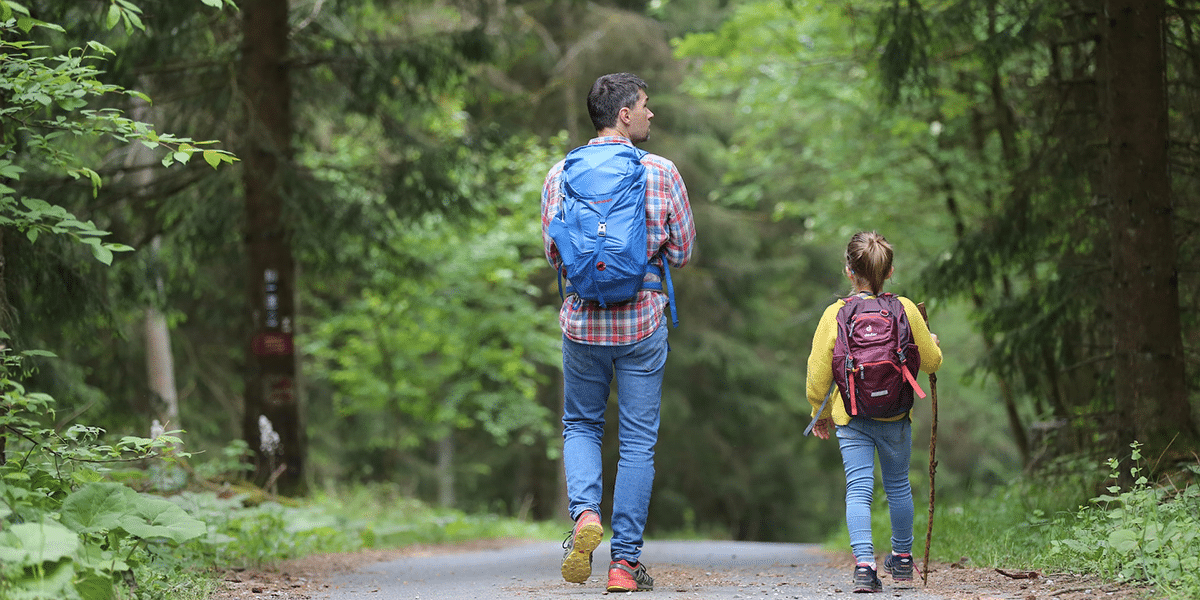Hiking with Kids – Tips for Family-Friendly Outdoor Adventures
When it comes to creating unforgettable family experiences and nurturing a deeper connection with nature, few activities rival the joys of hiking with kids.
In today’s fast-paced and technology-driven world, family-friendly hiking offers a refreshing opportunity to unplug, unwind, and embark on outdoor adventures that not only bring families closer together but also provide an array of physical, mental, and emotional benefits for kids and parents alike.
- Preparing for the Journey
- Packing Essentials for a Successful Hike
- Setting Realistic Expectations
- Engaging Activities on the Trail
- Adventure Games and Storytelling
- Safety First
- Making Hiking Enjoyable for All
- Hiking with Kids: Encouragement and Motivation
- Hiking with Kids: Celebrating Milestones and Achievements
- Turning Challenges into Opportunities
- Embracing Flexibility and Adaptability
- Creating Positive Traditions
- Hiking with Kids: Embracing Flexibility and Adaptability
- Hiking with Kids: Adjusting Plans According to Kids’ Needs
- Hiking with Kids: Finding Joy in Unexpected Discoveries
- Encouraging Spontaneity and Curiosity
- Cultivating a Sense of Wonder
- Hiking with Kids: Learn More
From fostering a sense of wonder and discovery to promoting physical fitness and environmental stewardship, hiking has the power to leave an indelible mark on children’s lives.
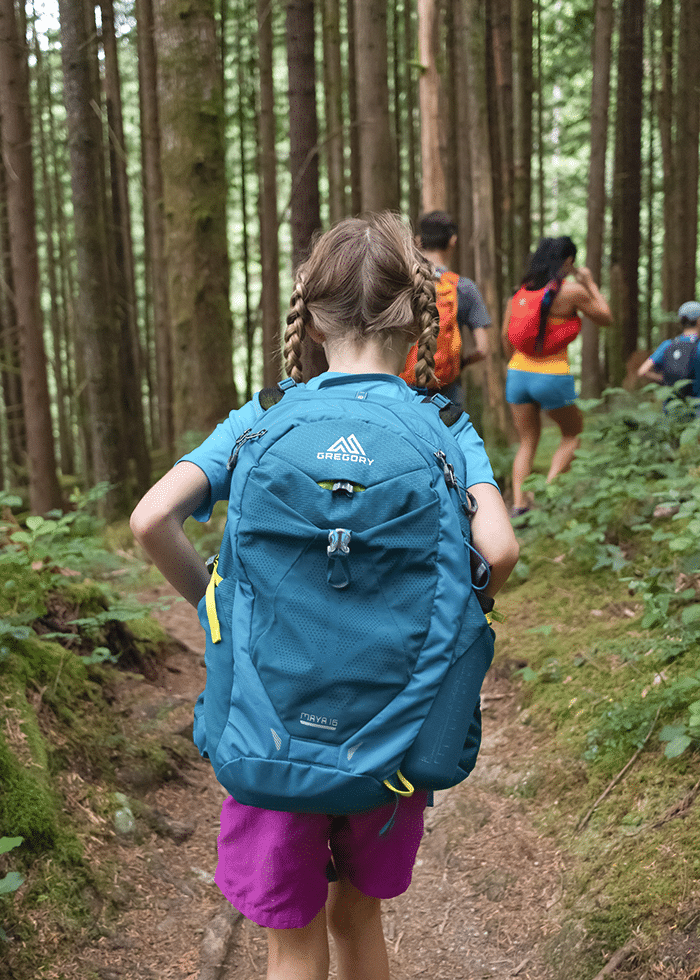
In this article, we delve into hiking with Kids, exploring the myriad advantages that hiking brings to families and why the effort invested in planning and embarking on such adventures is undoubtedly worthwhile. So, gear up, put on those hiking boots, and let us discover the captivating world of family hiking.
Preparing for the Journey
The success of a family-friendly hiking adventure begins with a well-informed choice of trail. While some trails may be enticing, it’s essential to consider various factors to ensure that the chosen path aligns with the abilities and interests of all family members. Here are key considerations to keep in mind when selecting the perfect trail for your family hike:
Trail Length and Difficulty
Assess the trail’s length and level of difficulty. Opt for shorter trails with gradual elevation changes, especially if you have young children or beginners.
Research the trail’s elevation gain and terrain. Steep ascents and challenging terrain may be better suited for older kids or experienced hikers.
Scenery and Points of Interest
Choose a trail that offers captivating scenery and points of interest along the way. Scenic viewpoints, waterfalls, or unique geological formations can engage children and keep them motivated.
Consider trails with opportunities for wildlife spotting or plant identification, adding an educational element to the hike.
Facilities and Amenities
Look for trails with accessible facilities, such as restrooms, picnic areas, and designated parking lots. These amenities can enhance the overall comfort of the hiking experience.
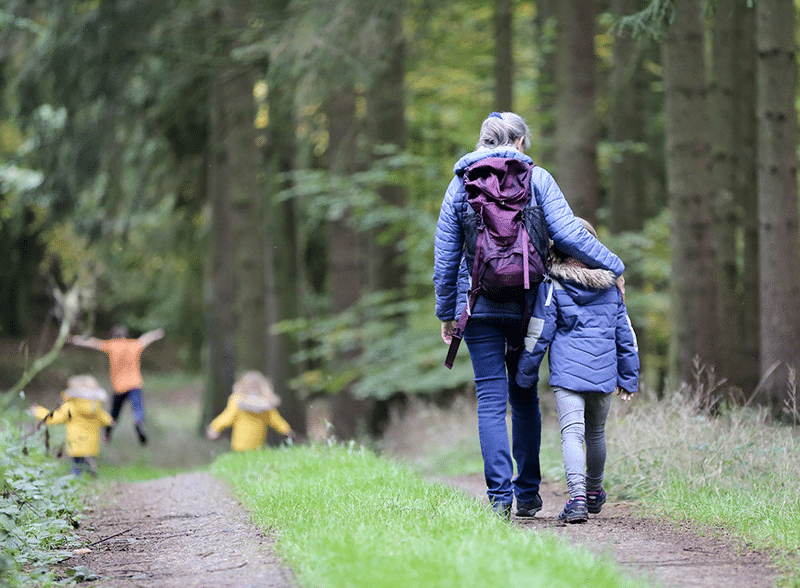
Some trails may have interpretive signs, visitor centres, or guided tours that provide valuable information about the area’s history, geology, and ecology.
By carefully evaluating these factors, you can ensure that your chosen trail sets the stage for an enjoyable and manageable family hike. Remember that the goal is to create lasting memories and a sense of accomplishment for everyone, making the trail selection process a crucial step in preparing for your outdoor adventure.
Packing Essentials for a Successful Hike
As you embark on a family-friendly hiking expedition, proper preparation is key to ensuring a safe and enjoyable adventure. Packing the right essentials can make a significant difference in the overall experience for both parents and kids. Here are the fundamental items you should include in your hiking gear:
Clothing and Footwear
- Dress in comfortable, moisture-wicking layers to adapt to changing weather conditions.
- Consider lightweight and breathable fabrics.
- Wear sturdy and supportive hiking boots or trail shoes that provide ample grip and protection.
- Pack extra socks to prevent blisters and keep feet dry during the hike.
Food and Snacks
Bring a variety of nutritious and energy-boosting snacks that appeal to your kids’ tastes. Trail mix, granola bars, fresh fruit, and sandwiches are great options.
Pack a well-balanced lunch if you plan on a longer hike. Consider portable options that don’t require refrigeration.
Hydration and Water
Carry an adequate amount of water for everyone. Hydration is crucial, especially when hiking with children, to prevent dehydration.
Use refillable water bottles or hydration reservoirs to minimize waste and stay eco-friendly.
First Aid Kit and Safety Gear
Have a compact first aid kit that includes bandages, antiseptic wipes, adhesive tape, pain relievers, and any necessary personal medications.
- Include insect repellent and sunscreen to protect against bites and sunburn.
- Carry a whistle, flashlight, and a multi-tool for emergencies and unexpected situations.
- Ensure that you have a map of the trail and a compass or GPS device for navigation.
Packing these essentials ensures that you’re well-equipped to handle various scenarios and keep your family comfortable and safe during the hike.
Remember, thoughtful preparation is the foundation of a successful and memorable outdoor adventure with your kids.
Setting Realistic Expectations
Hiking with kids is a delightful way to introduce them to the wonders of the great outdoors and encourage a love for nature. However, it’s essential to set realistic expectations to ensure an enjoyable and stress-free experience for both parents and children.
Here are key aspects to consider when setting expectations for your family-friendly hiking adventure:
Managing Distance and Pace
Be mindful of the distance you plan to cover. Younger children might have shorter endurance levels, so opt for shorter trails or plan to hike at a slower pace.
Gauge the hiking pace based on the slowest member of the group. It’s better to progress at a comfortable speed to prevent exhaustion and frustration.
Planning Breaks and Rest Stops
Incorporate regular breaks into your hiking itinerary. These breaks allow kids (and adults) to rest, rehydrate, and enjoy the surroundings.
Utilize rest stops for interactive activities like exploring a unique rock formation, playing a game, or having a mini-picnic.
Considering Age and Physical Abilities
Tailor the hiking route to match the age and physical abilities of the youngest family members. Choose trails that are accessible and engaging for everyone.
Keep in mind any medical conditions or physical limitations that family members may have. This ensures a safe and inclusive experience for all.
By setting realistic expectations, you create an environment where every family member can fully participate and enjoy the journey. Flexibility and patience are key as you adapt the hiking experience to match the needs and capabilities of your kids. Remember, the goal is not only to reach a destination but to savour the moments and discoveries along the trail.
Engaging Activities on the Trail
Transforming a family hike into an educational expedition not only enhances the overall experience but also fosters a deeper connection with the natural world.
Nature-based learning adds an element of wonder and discovery, turning each step of the trail into a valuable lesson. Here are creative ways to infuse educational elements into your family-friendly hiking adventure:
Identifying Plants and Wildlife
Encourage your kids to become amateur botanists and wildlife observers. Bring along guidebooks or use smartphone apps to identify plants, birds, insects, and other creatures you encounter.
Share interesting facts about the flora and fauna you discover, promoting a sense of curiosity and appreciation for the environment.
Teaching Environmental Awareness
Discuss the importance of conservation and preservation. Highlight how ecosystems work, and emphasize the role humans play in maintaining a healthy balance in nature.
Use the hike as an opportunity to talk about environmental challenges and discuss ways your family can contribute to a more sustainable future.
Incorporating Science and Exploration
Turn the trail into a science laboratory. Collect rocks, leaves, or water samples, and explore their properties together.
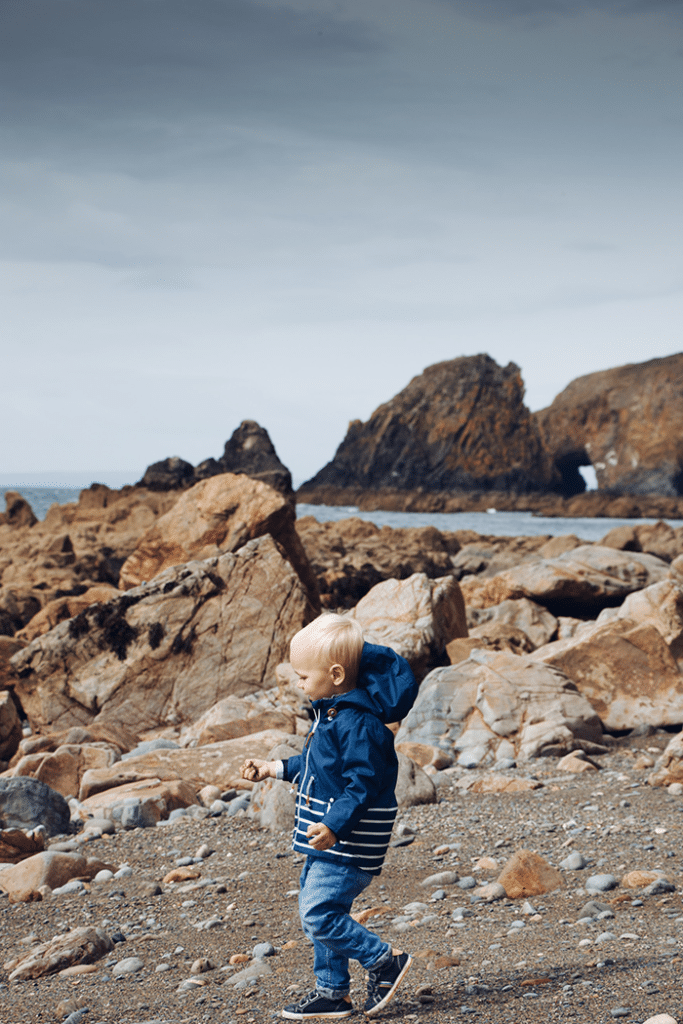
Engage in simple experiments, like observing how shadows change throughout the day or identifying different soil types.
By integrating nature-based learning into your family hikes, you’re not only fostering a love for the outdoors but also nurturing a lifelong passion for learning.
These educational adventures provide your children with a unique perspective on the natural world, encouraging them to be curious, observant, and environmentally conscious. So, step onto the trail with an open mind and a desire to explore, and watch your family’s hiking experience transform into an enriching educational journey.
Adventure Games and Storytelling
Scavenger Hunts and Treasure Maps
Elevate the excitement by organizing a scavenger hunt where kids search for specific items along the trail. Create a list of nature-inspired treasures to find, such as leaves of different shapes, animal tracks, or unique rocks.
Design treasure maps that lead to hidden “treasures” or surprise treats. This adds an element of exploration and adds a sense of accomplishment for kids.
Trailside Storytelling and Imagination
Spark imagination by weaving tales related to the surroundings. Envision the history of a gnarled tree or the adventures of woodland creatures.
Take turns creating a collaborative story as you hike, letting each family member contribute to the unfolding narrative.
Learning through Play
Integrate learning with play through educational games like counting various types of plants or identifying bird calls.
Use natural materials like sticks and stones to teach math concepts or even practice spelling.
Photography and Creativity
Equip kids with disposable cameras or allow them to use your smartphone to capture the beauty of nature from their perspective.
Encourage them to document interesting discoveries, from vibrant flowers to intricate spider webs.
Encouraging Artistic Expression:
Carry sketchbooks and coloured pencils for impromptu art sessions. Encourage kids to sketch their surroundings or create nature-inspired art.
Collect fallen leaves, petals, or twigs to craft temporary works of art on the trail.
Documenting the Journey
Maintain a hiking journal where kids can jot down their thoughts, observations, and highlights from the adventure.
Create a family hiking scrapbook, including photographs, drawings, and notes from each excursion.
Adventure games, storytelling, and creative activities not only make hiking more enjoyable for kids but also enhance their engagement with the natural world.
These interactive elements infuse excitement and imagination into the hike, making each step a new opportunity for discovery and learning. So, pack your sense of adventure along with your hiking gear and watch as the trail becomes a canvas for endless creativity and exploration.
Safety First
Ensuring a safe and harmonious hiking experience goes hand in hand with instilling a sense of responsibility and respect for the natural environment. Teaching kids trail etiquette and fostering a connection with nature’s delicate balance empowers them to become responsible hikers and stewards of the outdoors.
Leave No Trace Principles
Educate kids about the Leave No Trace principles, which emphasize minimizing human impact on the environment. Discuss concepts like packing out all trash, not picking flowers, and avoiding unnecessary disturbances.
Lead by example and demonstrate proper trail etiquette, such as staying on marked paths and respecting established camping areas.
Proper Waste Disposal
Emphasize the importance of packing out all trash and disposing of waste properly. Teach kids to use designated trash receptacles or carry their waste until they find a suitable disposal location.
Discuss the environmental consequences of improper waste disposal and how their actions can contribute to the preservation of natural habitats.
Respecting Wildlife and Vegetation
Educate children about the significance of wildlife and plants in their natural habitats. Teach them to observe from a safe distance and not to feed or approach animals.
Explain the role of different plants in the ecosystem and discourage picking or damaging them. Encourage kids to appreciate the beauty of nature without causing harm.
By nurturing a culture of respect and responsibility, you equip your children with valuable skills that extend beyond the hiking trail. Teaching trail etiquette and environmental consciousness not only ensures a safer hiking experience but also cultivates a lifelong connection to nature and a commitment to its conservation.
As your family explores the great outdoors, remember that the lessons learned about respecting nature are as essential as the gear you pack.
Weather and Emergency Preparedness
Prior to embarking on a hike, make it a routine to check weather forecasts for the trail area. Be aware of any potential changes in weather patterns or extreme conditions that could affect the hike.
Be prepared for sudden weather changes. Pack appropriate clothing layers, rain gear, and extra supplies if the forecast indicates variable conditions.
Carrying Essential Safety Gear
Create a hiking safety checklist that includes must-have items, such as a fully charged mobile phone, a map or GPS device, a compass, and a whistle for signalling in case of emergencies.
Pack a multi-tool, flashlight, and extra batteries, as well as a lightweight emergency shelter or blanket to stay warm if needed.
Knowing Emergency Procedures
Familiarize yourself and your family with the emergency procedures specific to the trail and park you’re visiting. Know how to contact park rangers or emergency services if necessary.
Teach children how to use a whistle to signal for help and establish a designated meeting point in case you get separated.
Staying Informed and Adapting Plans
Stay vigilant during the hike and be alert to any changes in weather or signs of discomfort among family members.
Be ready to adapt your plans if conditions worsen. Have a backup plan or alternate routes in mind in case you need to change your itinerary.
Communication and Notification
Inform a trusted friend or family member about your hiking plans, including the trail you’ll be on and your expected return time. Update them when you complete your hike.
Encourage older children to memorize important contact numbers or carry them in their backpacks.
Prioritizing weather awareness and emergency preparedness ensures that your family’s hiking experiences remain safe and enjoyable. While the focus is on adventure and exploration, it’s essential to be equipped with the knowledge and tools needed to handle unexpected situations.
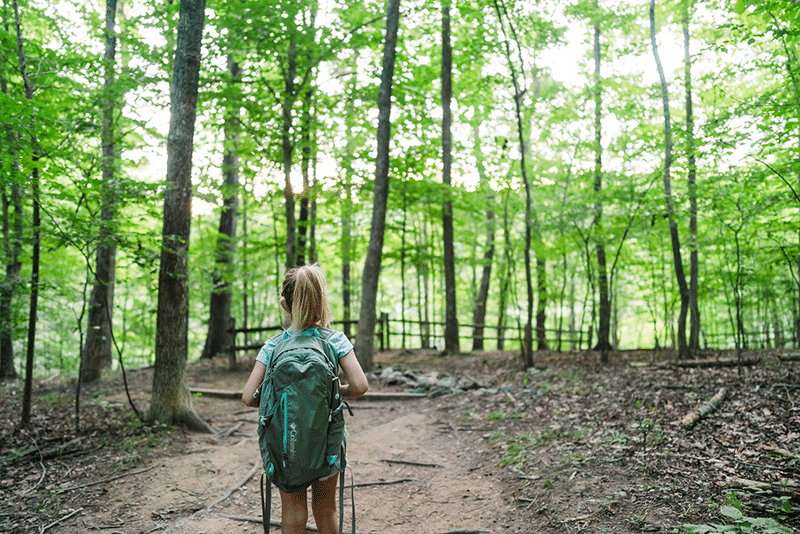
By following these guidelines, you’ll be ready to face any challenges that come your way while keeping your family’s safety the top priority.
Making Hiking Enjoyable for All
Hiking with your family is not only about reaching a destination; it’s about creating lasting memories and nurturing a love for the great outdoors.
Fostering a positive attitude can turn even the most challenging moments into valuable experiences.
Here is how you can cultivate a positive mindset during your family-friendly hikes:
Hiking with Kids: Encouragement and Motivation
Offer words of encouragement to each family member throughout the hike. Positive affirmations can boost morale and keep everyone motivated, especially when facing uphill climbs or tricky terrain.
Remind your kids of their capabilities and how far they’ve come. Acknowledging their efforts reinforces their confidence and determination.
Hiking with Kids: Celebrating Milestones and Achievements
Set achievable goals for each hike and celebrate reaching them. It could be reaching a scenic overlook, completing a certain distance, or spotting a specific wildlife species.
Capture these milestones with photos and take a moment to savour the accomplishment as a family.
Turning Challenges into Opportunities
Encourage your family to view challenges as opportunities for growth and learning. Facing obstacles together can strengthen family bonds and resilience.
Engage in problem-solving discussions when faced with obstacles, involving everyone in finding creative solutions.
Embracing Flexibility and Adaptability
Embrace unexpected moments and detours. These unplanned experiences can lead to some of the most memorable and cherished family stories.
Stay flexible with your plans. If a particular trail segment becomes too strenuous, be willing to adjust your route or turn back if necessary.
Creating Positive Traditions
Develop unique traditions or rituals that your family follows on each hike. It could be a special snack at a halfway point or a group photo at the trailhead.
These traditions help build a sense of anticipation and excitement for each hiking adventure.
A positive attitude can transform a simple hike into a truly enjoyable and enriching experience. By fostering encouragement, celebrating achievements, and embracing challenges, you create an environment where every member of the family can thrive and create cherished memories. So, embark on your family hikes with a smile and an open heart, and watch as the trails become pathways to unforgettable moments.
Hiking with Kids: Embracing Flexibility and Adaptability
Approach each hiking adventure with a sense of curiosity and a willingness to explore new trails. Venturing into unfamiliar territory adds an element of excitement and novelty to the experience.
Research and choose trails that offer a variety of features, such as different terrains, scenic viewpoints, or unique natural formations.
Hiking with Kids: Adjusting Plans According to Kids’ Needs
Recognize that children’s needs and interests may change along the hike. Be attentive to their comfort level, energy levels, and any signs of fatigue.
Be prepared to modify your itinerary, take more breaks, or shorten the hike if necessary to ensure a positive experience for everyone.
Hiking with Kids: Finding Joy in Unexpected Discoveries
Embrace the unexpected moments that arise during a hike. These could be chance wildlife sightings, stunning vistas, or spontaneous play opportunities.
Encourage your kids to be present in the moment and appreciate the beauty and wonder of nature’s surprises.
Encouraging Spontaneity and Curiosity
Allow your children to lead the way at times. Their sense of spontaneity and curiosity can lead to delightful discoveries and new paths.
Create opportunities for unstructured exploration, like letting them investigate a rock formation or examine a mysterious plant.
Cultivating a Sense of Wonder
Share your own sense of awe and wonder with your children. Point out intricate details in the natural world and encourage them to observe and question.
Foster a mindset of exploration and curiosity, helping your kids see each hike as a unique adventure waiting to unfold.
Embracing flexibility and adaptability enriches your family’s hiking experiences, making each outing an opportunity for growth and connection.
By being open to new trails, adjusting plans based on your kids’ needs, and finding joy in unexpected moments, you create a dynamic and fulfilling environment for exploration. As you journey along the trails, remember that the beauty of nature lies not only in its grandeur but also in the small, unexpected treasures waiting to be discovered.

